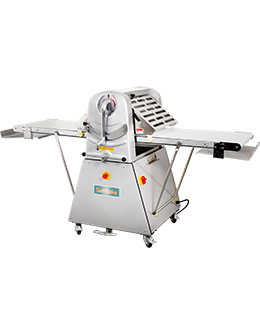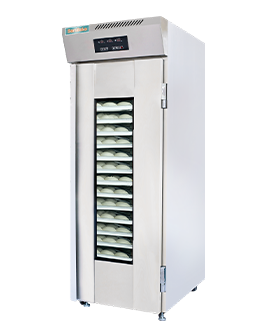Planetary Mixer
What Makes a Planetary Mixer Unique?

History and Evolution
The concept of planetary mixing dates back to the early 20th century, revolutionizing baking and food preparation. Over time, these mixers have evolved from bulky, manual machines to sleek, high-powered devices equipped with multiple attachments. Modern innovations have improved durability, efficiency, and versatility, making them indispensable in both home kitchens and industrial settings.
How Does a Planetary Mixer Work?
At its core, a planetary mixer has a mixing head that orbits around a stationary bowl while the paddle, whisk, or hook spins on its axis. This combined movement ensures ingredients are scraped from the sides and bottom of the bowl, preventing uneven mixing. It's like a dance where both partners move in harmony to create the perfect batter or dough. The result? Smooth, consistent mixtures every time.
Types of Planetary Mixers
There are mainly two categories: residential (home-use) and commercial (professional or industrial). Home versions are smaller, less powerful, and designed for occasional use. Commercial mixers, on the other hand, boast higher wattage, larger bowls, and more robust construction to handle continuous, heavy-duty tasks in bakeries or food factories.
Benefits of Using a Planetary Mixer
Why should you consider investing in one? For starters, they save time and effort, delivering professional-quality results effortlessly. The uniform mixing ensures better dough development and aeration, which is crucial for baked goods. Plus, their versatility allows for a wide range of attachments, from pasta makers to meat grinders.
Common Uses and Applications
From whipping cream and beating eggs to kneading bread dough, planetary mixers are versatile tools. Bakeries rely on them for producing large quantities of dough, while home cooks use them for everything from cake batter to pizza dough. Industrial applications include food processing, where consistency and efficiency are paramount.
Features to Look for When Buying
- Power: Choose based on wattage to match your mixing needs.
- Speed Options: Variable speeds give better control.
- Bowl Capacity: Ensure it’s large enough for your typical batch size.
- Attachments: Look for included paddles, whisks, dough hooks, etc.
- Build Quality: Prefer stainless steel and sturdy construction.
- Other Features: Consider digital controls, safety locks, and noise levels.
Top Brands and Models
Market leaders include:
- KitchenAid: Known for versatility and stylish design.
- Hamilton Beach: Budget-friendly and user-friendly models.
- Ankarsrum: High-performance models for serious baking.
Each brand offers various models catering to different levels of usage—from compact mixers for home kitchens to large-capacity industrial machines.
Maintenance and Care
- Clean attachments and bowl immediately after use.
- Lubricate moving parts periodically.
- Store accessories properly to prevent wear and tear.
- Don’t overload the machine during use.
- Refer to the user manual for long-term maintenance instructions.
Pros and Cons
- Pros: Efficient mixing, versatile attachments, durable, time-saving.
- Cons: Expensive, bulky, can be heavy and require storage space.
Comparing Planetary Mixers with Other Mixers
Unlike hand mixers or standard stand mixers that only spin in one direction, planetary mixers provide more thorough mixing due to their orbital motion. While hand mixers are portable and cheaper, planetary mixers are built for larger volumes and tougher ingredients. Choose based on your space, usage frequency, and baking style.
Tips for Using a Planetary Mixer Effectively
- Always start on a low speed to prevent splatter.
- Use the correct attachment for each task.
- Scrape the bowl occasionally for uniform mixing.
- Don’t exceed the recommended bowl capacity.
Future Trends in Planetary Mixers
- Smart features with app control and timers.
- Energy-efficient motors for sustainable operation.
- IoT integration for smart kitchen systems.
- Improved, specialized attachments for niche cooking tasks.
Conclusion
A planetary mixer is a powerful, versatile tool that elevates your culinary game. Whether you're a home baker or a professional pastry chef, investing in a good-quality planetary mixer can make your cooking faster, easier, and more enjoyable. With the right features and maintenance, it can serve you well for years to come. Ready to elevate your kitchen? A planetary mixer might just be your new secret weapon!
FAQs
1. Can I use a planetary mixer for making bread?
Yes, especially models with powerful motors and large bowls designed for kneading.
2. What attachments come with a planetary mixer?
Common attachments include paddles, whisks, and dough hooks. Some models include optional pasta rollers, meat grinders, or food processors.
3. Is a planetary mixer suitable for small kitchens?
Compact models are available, but they are generally larger and heavier than hand mixers. Ensure you have enough counter or storage space.
4. How long do planetary mixers usually last?
With proper care and maintenance, they can last 10–15 years or more.
5. Are planetary mixers loud?
They can be noisy, especially high-powered models, but modern designs are becoming quieter with noise-reduction features.
- *Name
- *Title
- *Content
- Name:
- Vickey
- Tel:
+86-18862554041
- Email:
- sales@sambake.com
- Address:
- Xinxiang Industrial Park,Wuxi City,Jiangsu China












